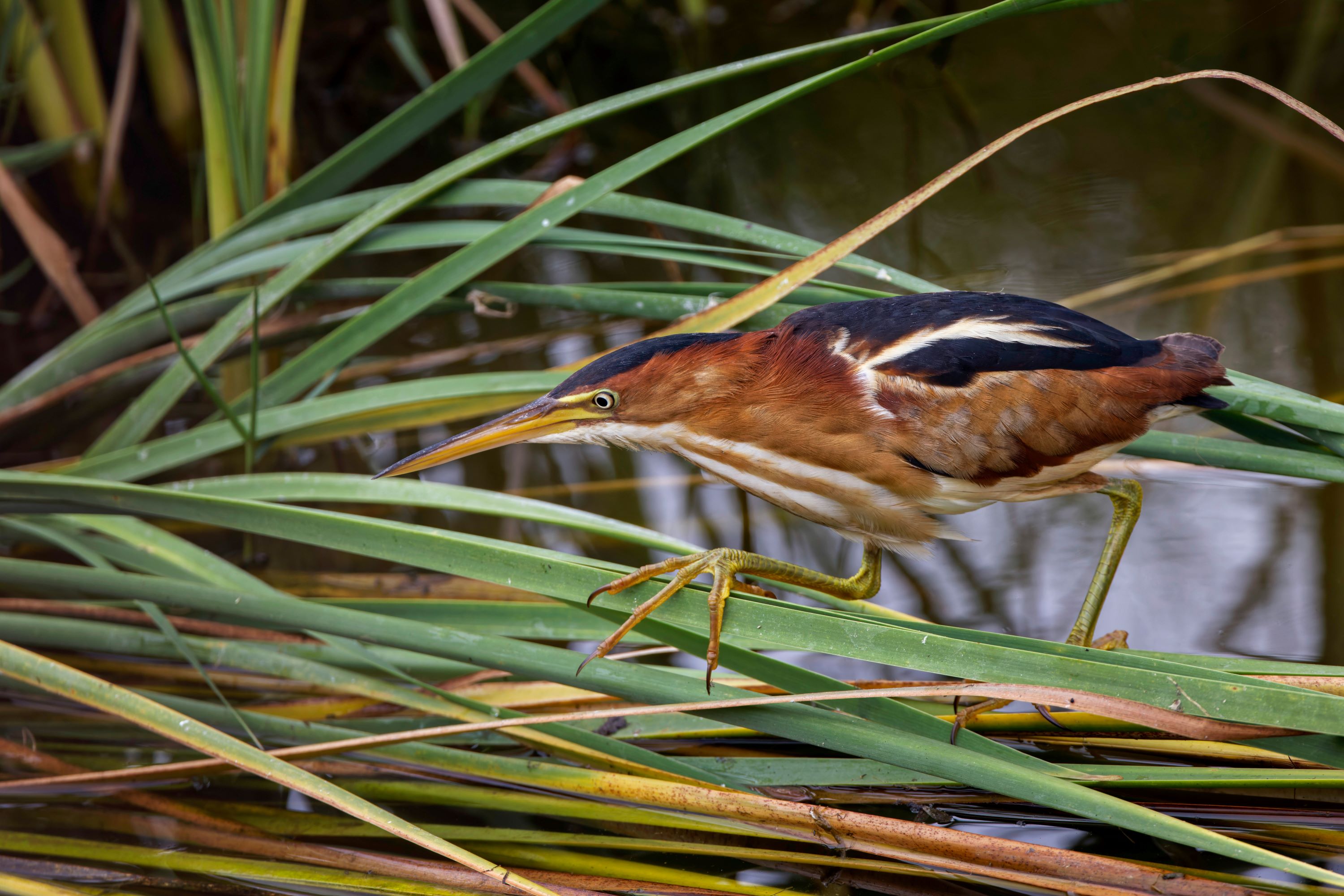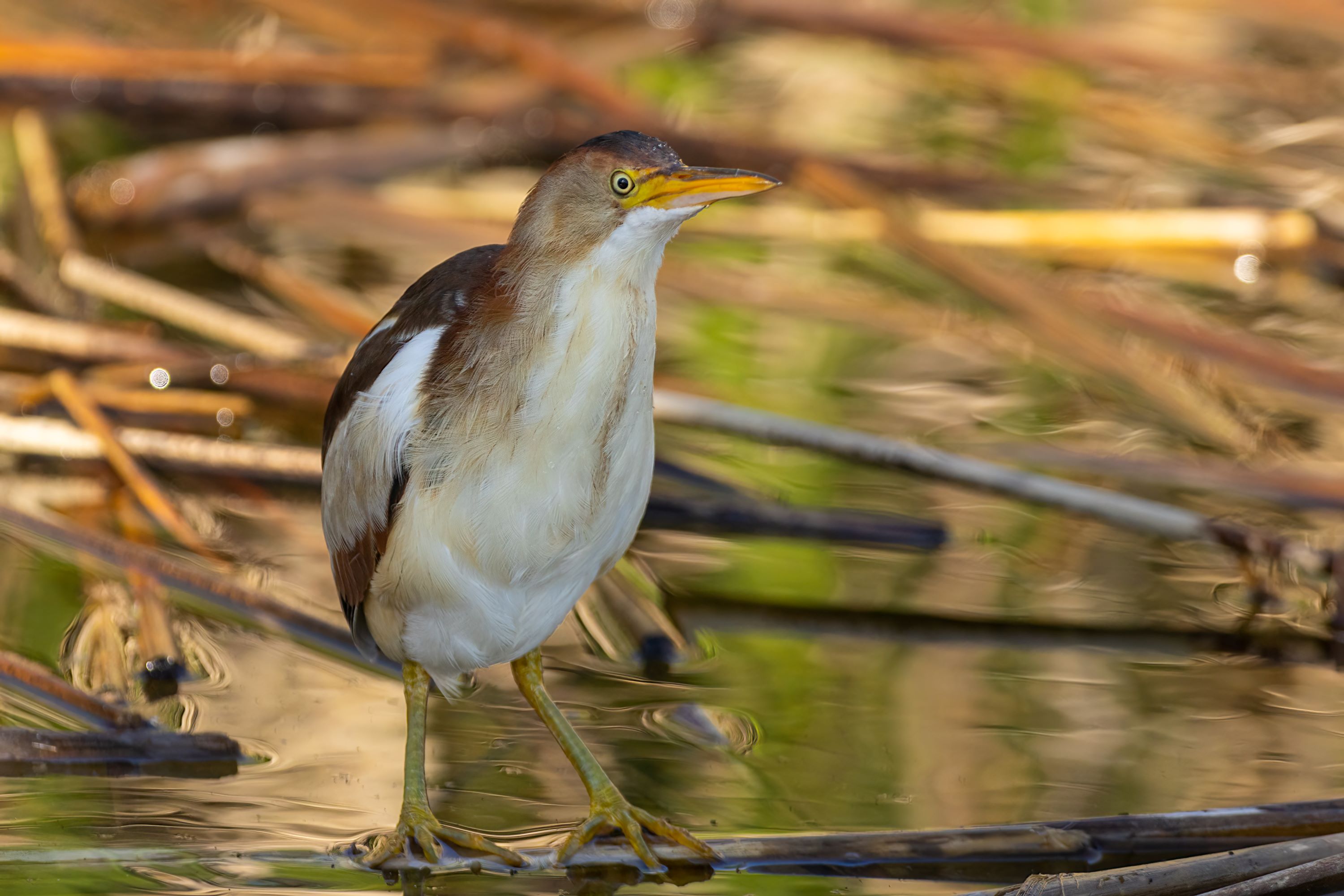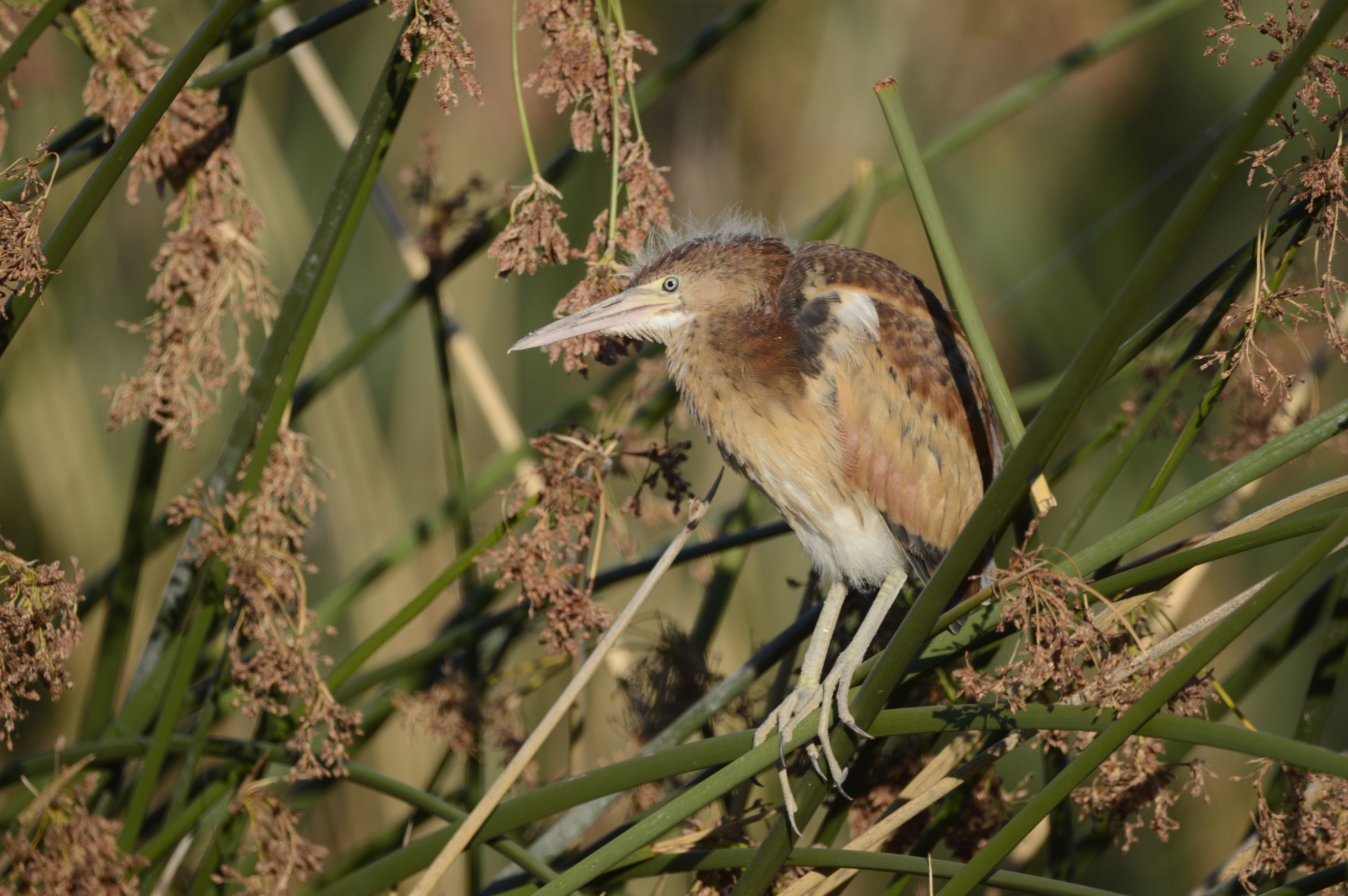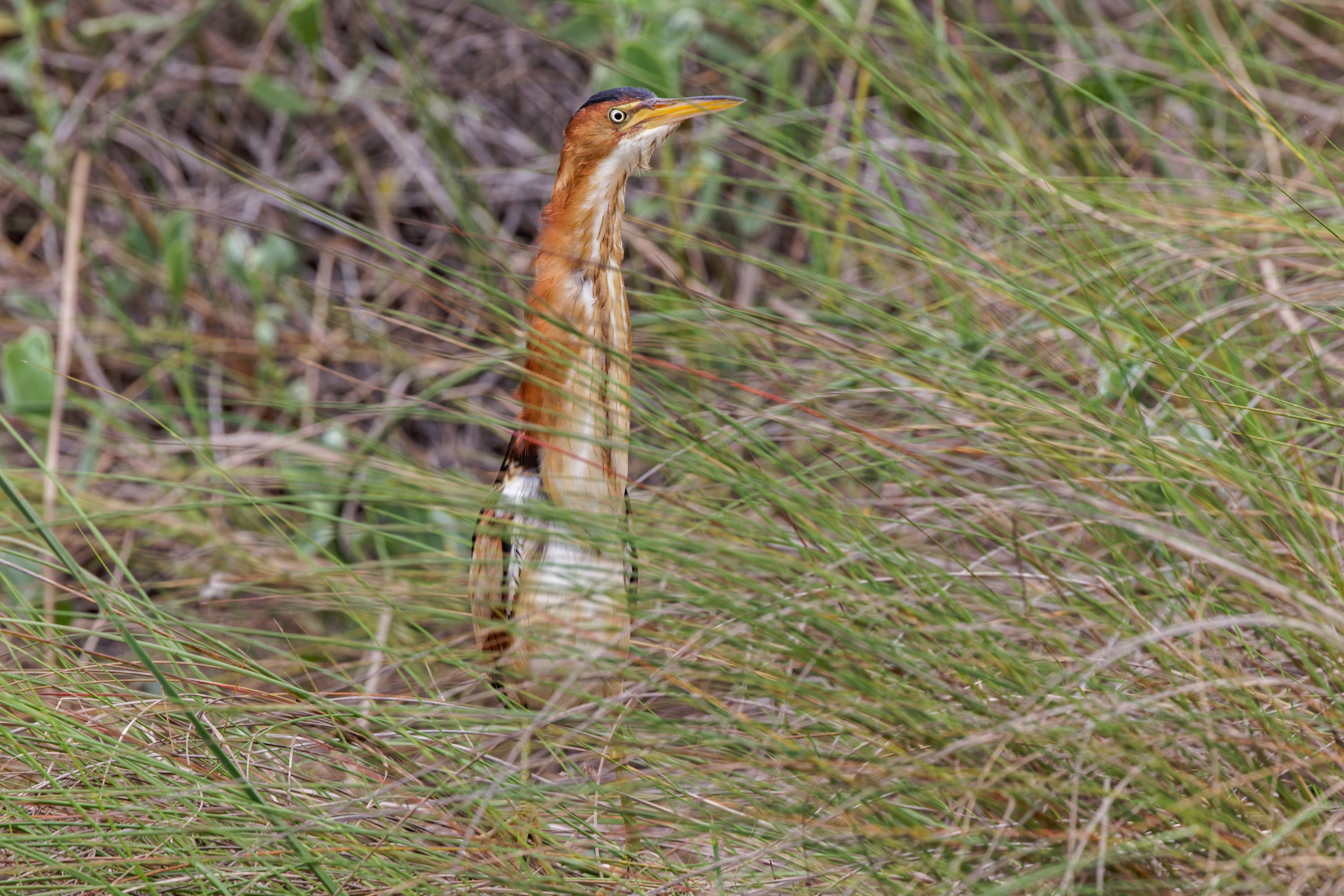
Least Bittern: The Elusive Miniature of American Wetlands
Introduction to the Least Bittern
The Least Bittern, Ixobrychus exilis, is a small heron renowned for its elusive nature and the smallest member of the heron family, Ardeidae, in North America. This diminutive bird, notable for its striking plumage and secretive behavior, inhabits marshes and wetlands, playing a significant role in the ecosystem despite its tiny stature.
Physical Description
The Least Bittern measures about 28 to 36 cm in length with a wingspan of approximately 40 to 50 cm, making it one of the smallest herons. It has a slender body, a short neck, and a sharp, pointed bill. The male displays striking plumage with a glossy black back and a chestnut-brown breast, while the female is duller with brown streaks. Both sexes exhibit yellow legs and a distinctive white stripe on the cheek.
Habitat and Distribution
This bittern is native to the Americas, with a range extending from the southeastern regions of Canada through the United States to northern Argentina. It inhabits freshwater marshes and wetlands, preferring areas with dense reed beds and cattails.

Behavior and Lifestyle
The Least Bittern is known for its incredible ability to blend into its surroundings. It moves stealthily among reeds and cattails, often remaining undetected. This bird is primarily crepuscular, being most active at dawn and dusk, though it can occasionally be seen during the day.
Feeding Habits
Its diet primarily consists of small fish, amphibians, and insects, which it hunts in shallow waters. The Least Bittern employs a “stand and wait” hunting strategy, striking swiftly with its bill when prey comes within range.
Breeding and Nesting Habits
Breeding typically occurs in dense marsh vegetation. The Least Bittern constructs a well-concealed nest close to the water, often attaching it to standing reeds or cattails. The nest is a platform made from marsh vegetation.

Egg Laying and Incubation
The female lays a clutch of about 2 to 7 eggs, which are pale blue or green in color. Both parents share the duties of incubation, which lasts about 17 to 20 days.
Chick Rearing and Parental Care
Chicks are altricial and require extensive care from both parents. They are fed regurgitated food and grow rapidly. The young start to climb and explore the surrounding vegetation within a few weeks and fledge about a month after hatching.
Vocalizations and Communication
While generally quiet, the Least Bittern makes a variety of sounds, especially during the breeding season. These include soft cooing calls and more assertive alarm calls.

Conservation Status
The Least Bittern is listed as Least Concern by the IUCN, but it faces threats from habitat loss, particularly the destruction and degradation of wetlands. Conservation efforts are focused on preserving and restoring these vital ecosystems.
The Least Bittern in Utah
Occasionally, the Least Bittern is observed in Utah, particularly in marshy and wetland areas such as the Bear River Migratory Bird Refuge and wetlands around the Great Salt Lake. These sightings, though rare, are treasured by birdwatchers in the state.
Similar Species and Taxonomy
The Least Bittern belongs to the order Pelecaniformes, family Ardeidae, and is part of the Ixobrychus genus, known for small bittern species. It shares its habitat preferences with other members of the Ardeidae family but is distinguishable by its small size and distinct plumage pattern.
Conclusion
The Least Bittern, Ixobrychus exilis, is a remarkable and charming bird, embodying the delicate balance of wetland ecosystems. Its presence, though often hidden in the reeds, is a reminder of the intricacies and beauty of these habitats. Protecting wetlands not only benefits the Least Bittern but also supports a rich diversity of wildlife, highlighting the importance of conservation efforts for these critical environments.